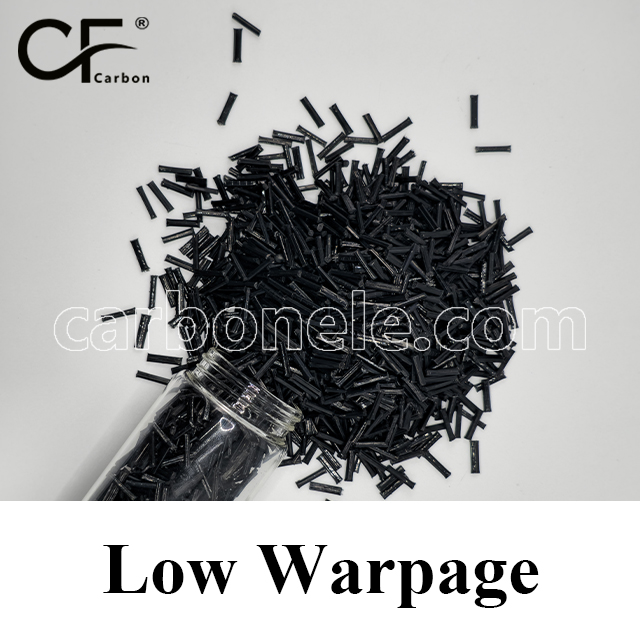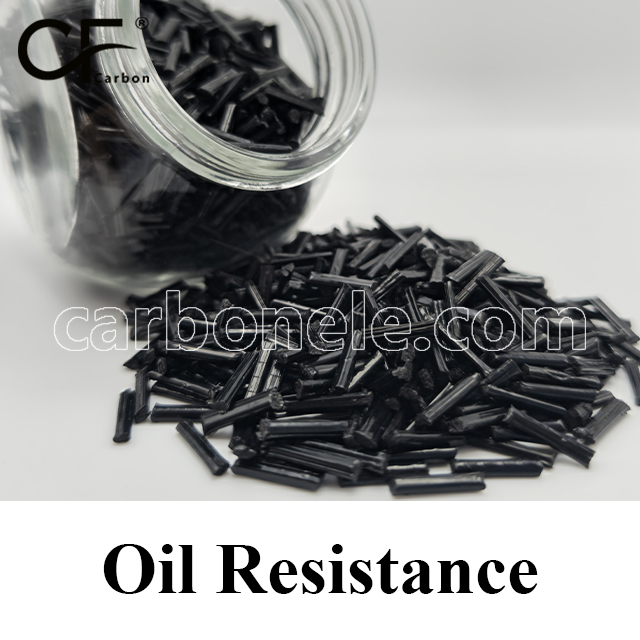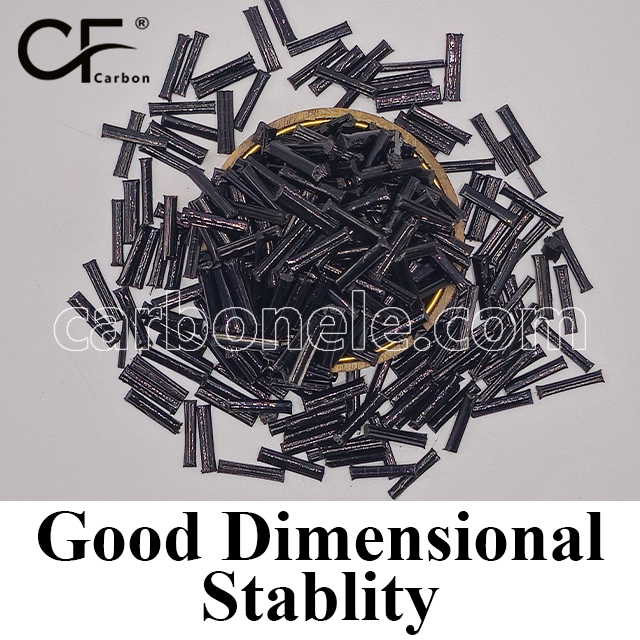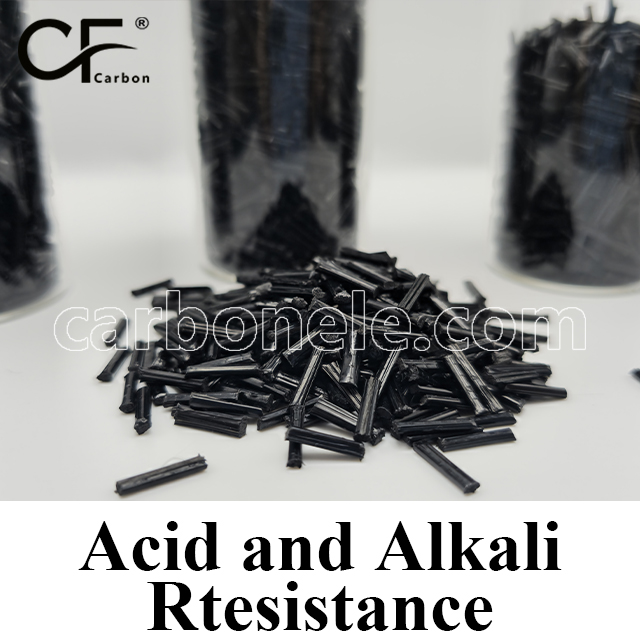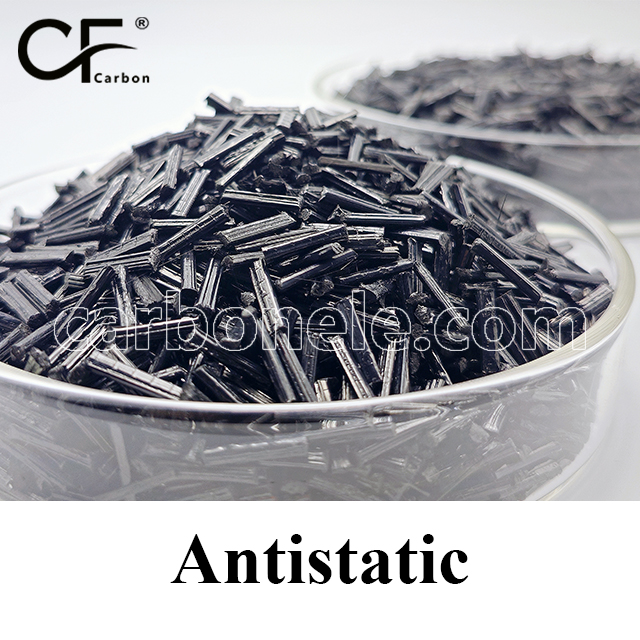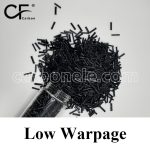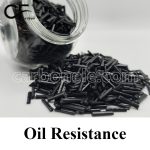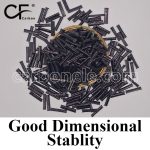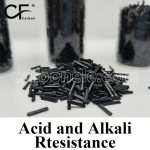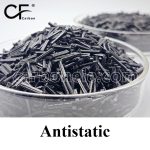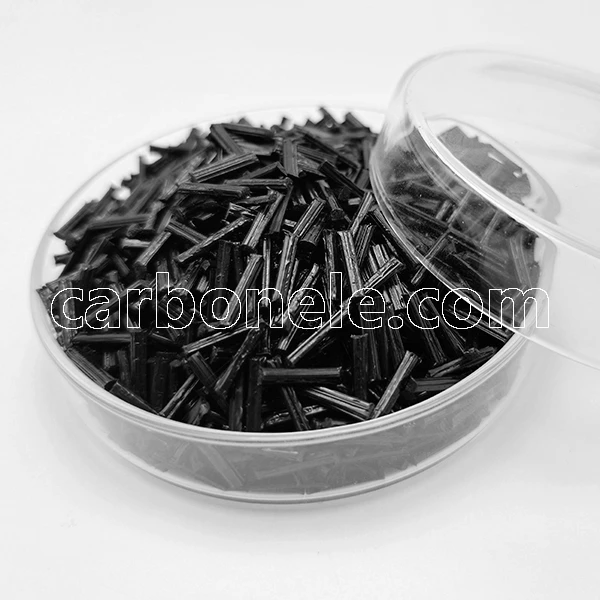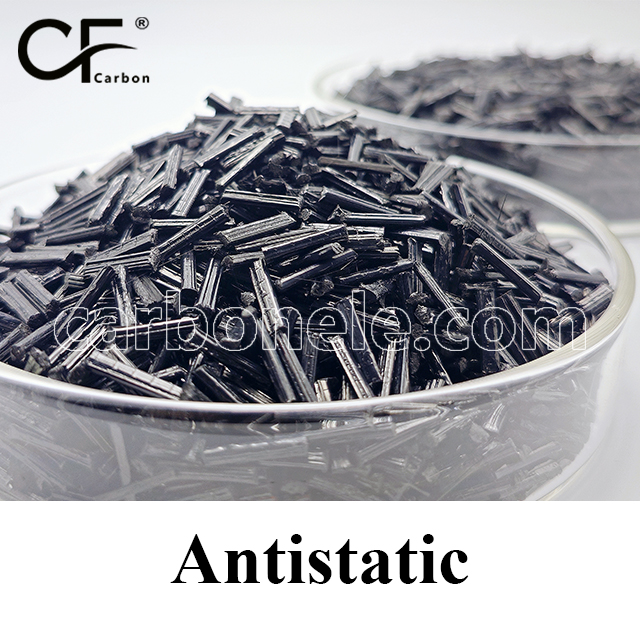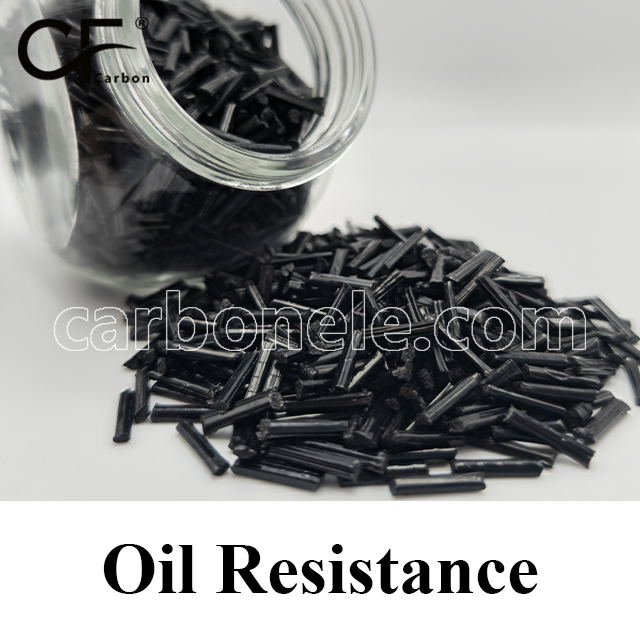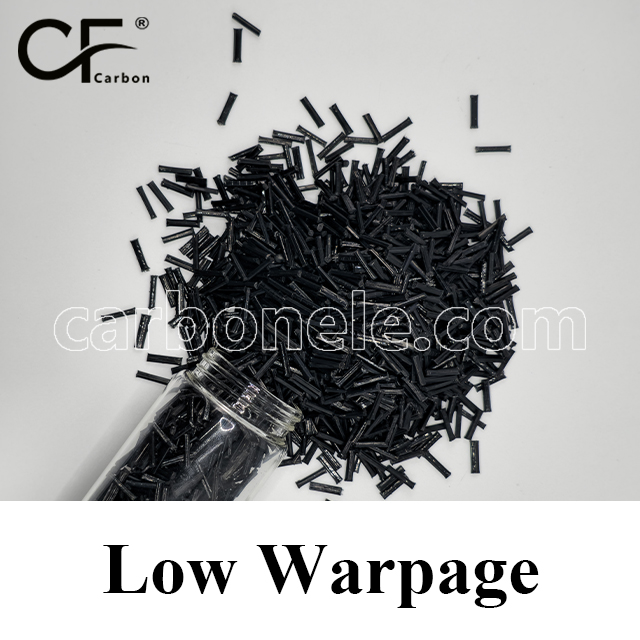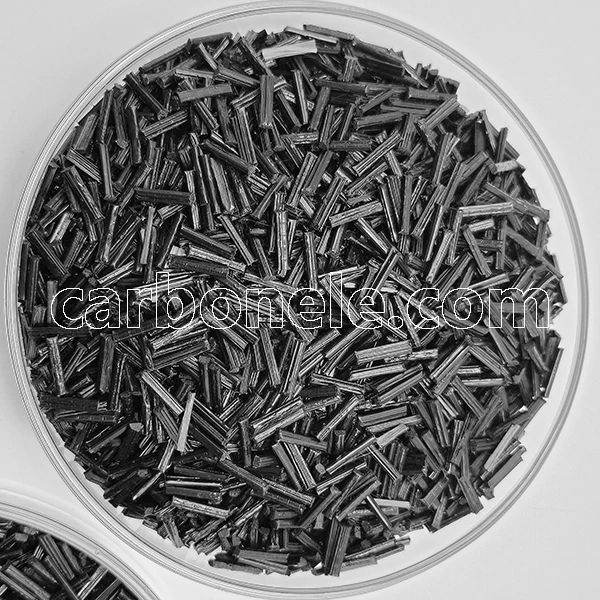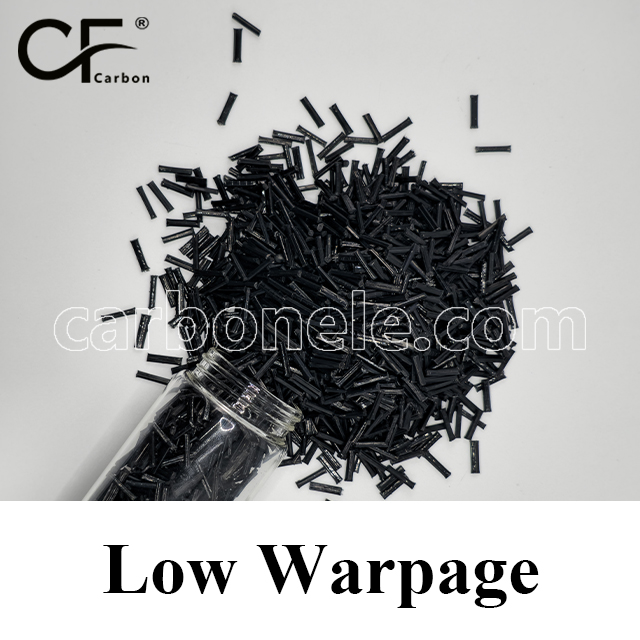PPS-LCF40 is a high performance thermoplastic reinforced with 40% long carbon fiber, delivering exceptional stiffness, tensile strength (≥ 200 MPa), and thermal stability up to 240 °C. Ideal for metal replacement in high load, high temperature, and chemically aggressive environments, it excels in automotive, aerospace, and industrial structural applications.

PPS-LCF40 Composites for Automotive Parts
- Model number: PPS-LCF-BCA4
- Matrix Resin: Polyphenylene Sulfide (PPS)
- Reinforcing Filler: Carbon fiber
- Appearance: Granules
- Grade: Injection/extrusion grade
- Packaging: 25kgs/bag
PPS-LCF40 | 40% Long Carbon Fiber Reinforced Polyphenylene Sulfide
PPS-LCF40 is an ultra high performance, semi crystalline thermoplastic composite reinforced with 40% long carbon fiber, engineered for maximum stiffness, strength, and dimensional stability in the most demanding mechanical, thermal, and chemical environments. Its high fiber loading delivers metal like structural performance, while preserving PPS’s intrinsic thermal stability and chemical resistance.
Compared to lower fiber content grades like PPS-LCF20 and PPS-LCF30, PPS-LCF40 offers superior flexural and tensile strength, creep resistance, and load retention, making it the material of choice for precision structural parts subjected to thermal cycling, high stress, and aggressive chemicals.
Core Performance Highlights
Mechanical Properties
Carbon Fiber Content: 40% (long chopped fibers, highly oriented during molding)
Tensile Strength: ≥ 190–200 MPa
Flexural Modulus: ~17–18 GPa
Elongation at Break: ~0.7–1.0%
Notched Izod Impact: ~40–50 J/m
→ With significantly higher fiber volume, PPS-LCF40 provides extreme stiffness and strength, ideal for metal replacement in high load, weight sensitive applications.
Thermal Resistance
Heat Deflection Temperature (HDT): ≥ 270 °C
Continuous Use Temperature: Up to 240 °C
→ Delivers long term structural integrity under continuous thermal stress, with excellent dimensional control and low creep—even in high heat operating cycles.
Environmental & Chemical Durability
Moisture Absorption: <0.02% — virtually impervious to humidity
Chemical Resistance: Excellent — resists degradation from fuels, oils, acids, bases, and industrial solvents
→ Ensures part stability and strength in corrosive, submerged, or chemical process environments.
Processing & Manufacturing
Molding Methods: Long fiber injection molding (LFT-G), compression molding
Surface Finish: Matte to coarse textured; fiber exposure likely
Tooling Requirements: Requires abrasion resistant, high temp steel tooling due to aggressive wear from fiber content
→ High performance results require controlled molding conditions to preserve fiber integrity and realize full mechanical potential. Tool life must be managed accordingly.
Target Applications
Automotive & Mobility
Transmission housings, crossbeams, suspension brackets
→ Replaces cast metals in under hood and chassis systems requiring stiffness, heat resistance, and weight reduction.
Aerospace & Defense
Structural supports, interior mounting frames, heat shields
→ Combines lightweighting and dimensional reliability for aircraft structural components and thermal insulation zones.
Industrial & Mechanical Equipment
Pump housings, robotic arm joints, wear critical bushings
→ Maintains precision and mechanical endurance under high mechanical load, vibration, and harsh chemicals.
Electronics & Electrical Systems
Power module carriers, structural EMI shielding, high temp frames
→ Offers thermal and dimensional stability for components in power electronics, EV systems, or industrial controls.
Performance Summary Table
| Property | Value / Description |
|---|---|
| Carbon Fiber Content | 40% (Long Carbon Fiber Reinforced) |
| Tensile Strength | ≥ 190–200 MPa |
| Flexural Modulus | ~17–18 GPa |
| Elongation at Break | ~0.7–1.0% |
| Notched Izod Impact | ~40–50 J/m |
| Heat Deflection Temp. | ≥ 270 °C |
| Long Term Service Temp. | Up to 240 °C |
| Moisture Absorption | <0.02% — highly dimensionally stable |
| Chemical Resistance | Excellent — fuels, oils, acids, bases, solvents |
| Wear Resistance | Very high — suitable for continuous friction or impact loads |
| Processing Methods | Long fiber injection molding (LFT), compression molding |
| Surface Finish | Matte/textured — visible fiber pattern likely |
| Dimensional Stability | Exceptional — extremely low creep and thermal expansion |
If you want to get more information about PPS-LCF40, you can visit our Youtube.
Friction coefficient of PPS-CF
The friction coefficient of PPS (Polyphenylene Sulfide) typically ranges from 0.3 to 0.45, while PPS-CF (Carbon Fiber Reinforced Polyphenylene Sulfide) has a lower coefficient, generally between 0.2 and 0.35. The addition of carbon fiber improves hardness, wear resistance, and reduces friction, making PPS-CF more suitable for high-load, high-temperature, and high-friction applications.

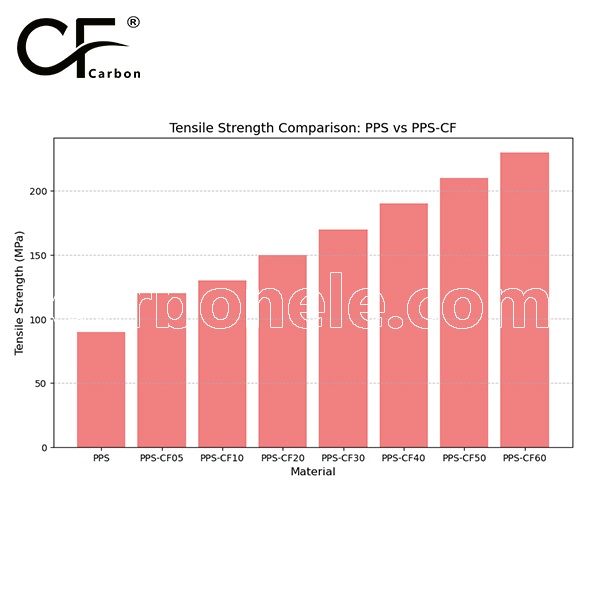

Frequently Asked Questions
Carbon (Xiamen) New Material Co., Ltd. aims to provide buyers with "one-stop" worry-free high-quality services. Here you can find all information about carbon fiber engineering plastics. If you still have questions, please send us an email for consultation!
-
How can I contact the manufacturer of a product that interests me?
When you find a product you are interested in, you can contact the manufacturer directly by sending an email and we will get back to you as soon as possible.
-
How do I find the products that interest me?
All you need to do is enter the keyword, product name in the search window and press the Enter key on your keyboard. Your search results page will then be displayed. You can also search within the product category pages on the home page. Each category is divided into subcategories, allowing you to refine your search and find products that interest you.
-
Where will I find a buying guide?
Please contact our after-sales service directly and we will provide you with a comprehensive operating guide.
-
What are CF Reinforced Thermoplastic Composites?
CF Reinforced Thermoplastic Composites are materials where carbon fibers are incorporated into a thermoplastic matrix. They combine the strength and stiffness of carbon fibers with the processability and recyclability of thermoplastics. For instance, they are used in automotive parts like bumper beams.
-
What are the benefits of CF Reinforced Thermoplastic Composites over traditional composites?
The key benefits include faster production cycles, easier recyclability, and better impact resistance. They also offer design flexibility. An example is in the manufacturing of consumer electronics casings where complex shapes can be achieved more easily.
-
How are CF Reinforced Thermoplastic Composites processed?
Common processing methods include injection molding, extrusion, and compression molding. Injection molding is widely used for mass production. For example, in the production of small components for the medical industry.
-
What industries use CF Reinforced Thermoplastic Composites?
They are utilized in aerospace, automotive, medical, and sports equipment industries. In aerospace, they can be found in interior components. In the medical field, they might be used in prosthetics.
-
How does the carbon fiber content affect the properties of the composites?
Higher carbon fiber content generally leads to increased strength and stiffness but may reduce ductility. A moderate content is often balanced for specific applications. For example, a higher content might be preferred in structural parts of a race car.
-
What are the challenges in using CF Reinforced Thermoplastic Composites?
Challenges include higher material costs, complex processing equipment requirements, and ensuring uniform fiber dispersion. Issues with adhesion between the fibers and the matrix can also arise. An example is in achieving consistent quality in large-scale production.







